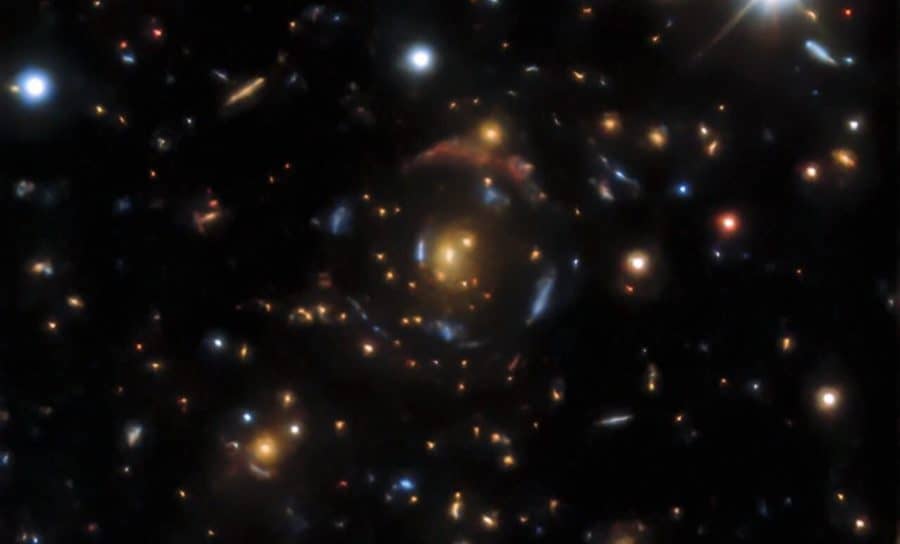A research team with participation by Berkeley Lab physicists has used artificial intelligence to identify more than 1,200 possible gravitational lenses – objects that can be powerful markers for the distribution of dark matter. The count, if all of the candidates turn out to be lenses, would more than double the number of known gravitational lenses.
Gravitational lenses result from large celestial objects, like galaxies or galaxy clusters, that bend the path of light traveling from more distant galaxies. When these chance alignments are almost perfect, this creates false images that can include rings, partial rings, multiple images, and other illusions.
The lenses can tell us about the contribution of dark matter in those distant, lensed objects, as we can only witness dark matter through its gravitational effects on visible matter. And that could help unravel one of the biggest mysteries in the universe, as dark matter accounts for an estimated 85% of the total mass of the universe.
All of the candidate lenses – discovered using a form of artificial intelligence known as deep residual neural networks – are considered to be of the strong variety, meaning they exhibit highly visible lensing effects. A study detailing the new lensing candidates has been accepted for publication in The Astrophysical Journal, and a preprint is available at arXiv.org.
“I really thought it would be many years before anyone would find this many gravitational lenses,” said David Schlegel, a senior physicist at Berkeley Lab who participated in this study. “It’s just amazing to know that you’re seeing, very clearly, space itself being warped by a massive object.” Schlegel also participated in an earlier study that turned up 335 new strong lensing candidates.
Researchers used a sample of 632 observed lenses and lens candidates, and 21,000 non-lenses to train the deep neural networks used in the study. The sample set was obtained from two sky surveys: the Dark Energy Camera Legacy Survey (DECaLS) and Dark Energy Survey (DES). About 1 in 10,000 massive galaxies was expected to be a strong gravitational lensing candidate.
The DECaLS survey was one of three surveys that was conducted in preparation for the startup of the Dark Energy Spectroscopic Instrument (DESI), a Berkeley Lab-led experiment that will help us to better understand dark energy, which is driving the universe apart at an accelerating rate.
Researchers used computing resources at Berkeley Lab’s National Energy Research Scientific Computer Center (NERSC) for their data analysis. NERSC is a DOE Office of Science user facility.

